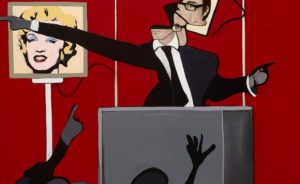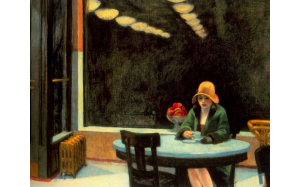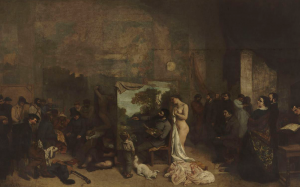How to buy your first work of art
 The world of art can be intimidating. It seems that everyone understands what is happening, except for you. And this may make it difficult to purchase the first work of art.
The world of art can be intimidating. It seems that everyone understands what is happening, except for you. And this may make it difficult to purchase the first work of art.
This is not so difficult, says lawyer, collector and art historian Peter Hort, heir to the art collection of Horta. Here the main self-study, building and compliance with your budget.
Education begins with a visit to museums and galleries. “Decide what you like,” says Hort. “Talk to other collectors or art consultants. Visit the galleries and start meeting these people and chat with other people in the community. ”
There is another way to experience the world of art – visit art auctions to learn about the cost and speed of bidding.
Hort says that by doing this, you will learn about different periods, styles, prices and most importantly what you like. Visiting galleries also provides an opportunity to see young artists.
As soon as you gain confidence and are ready to make your first purchase, the next step will be building and keeping your budget. You should buy what you like, but if you are going to spend a lot of money, then you want it to be a profitable investment. The reason for setting the budget is that you can get carried away during the auction. The energy of the premises and the fast pace of trading can make you go beyond the budget.
So what is the budget for investing in art? This is a wide range, but expect to spend from 1,000 to 10,000 dollars for the work of a new artist. If you think you can win a deal at a street art exhibition or fair, think again. Hort says that such art exhibitions are a great way to decorate your home, but it’s unlikely that you will find a valuable picture there.
If suddenly you find what you like and can afford it, be sure to buy it. This is a lesson that Hort learned from his own experience. “For me it was the work of Tom Otterns (American sculptor, – ed.)“ Free Speech ”. I was offered a job that I liked for $ 8,000. I passed by. It was significantly more than I wanted to spend at that moment. When I came back to the owner a few months later, I found out that she was put up for auction. I registered for the auction, but it was sold in April of this year [2013] at Phillips auction for $ 21,000. ”
Here are Hort’s tips on how to buy art:
1. Do your research. Open yourself up to new things and find out what art you like, and the best way to do it is to see a lot of art. Visit museums and galleries, talk to other collectors and artists; try to familiarize yourself with the different periods and styles.
2. Determine your budget and be prepared to spend a little more. What I regret most of all is about those works that I did not buy. Also keep in mind the hidden costs of art: shipping, framing and insurance. If you buy something at an auction, there is a buyer’s premium (payment to the auction organizer for organizing and conducting bidding for the purchased lot, which is determined as a percentage of the auction price, ed.), Which can be quite high.
3. Visit one or two auctions before planning your first artwork purchase. Understanding the rhythm and flow of art auctions can take time, and the first auctions can be overwhelming. The buyer may leave with regret if he is not properly prepared.
4. Talk to other collectors and art consultants. The world of art seems exorbitant from time to time, and talking to experts is the best way to make your way through the first purchase. You can learn something about the business. In the world of art you can ask for a discount when you buy in the gallery. The price indicated is not always the sale price. Galleries often give discounts to collectors who have already bought several works from them, or perhaps the gallery is interested in developing relations with a new perspective. When buying in the gallery there will be no harm if you ask: “Is this your final price?”.
5. Buy what you like. Trust your heart and be sure of your purchase. Always remember that it is important to try to see the subject you are considering in reality. Everything looks different in a photo or in jpeg format.
6. For the best investment, consider exploring a young, new art. It is cheaper, has great potential to increase value and leads to future profits. Not all art is created equally; decorative or small works of famous authors can be excellent, but they often cost more and are not a long-term investment.
7. Store all – receipt, invoice and documentation. Do not throw away anything, as this is used to authenticate and evaluate the item.
Art may or may not be an investment.





